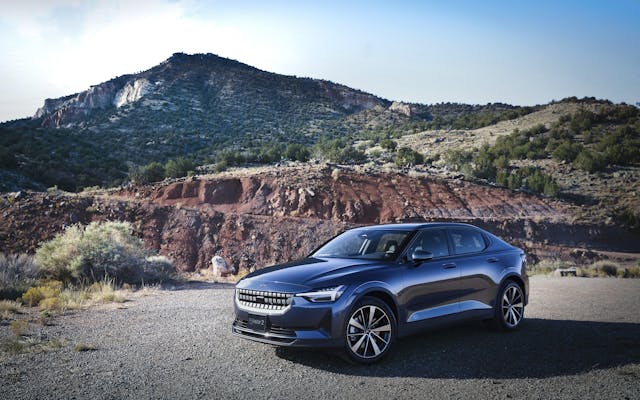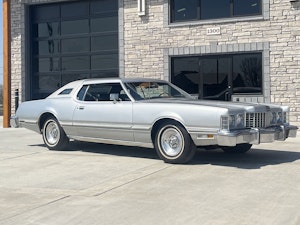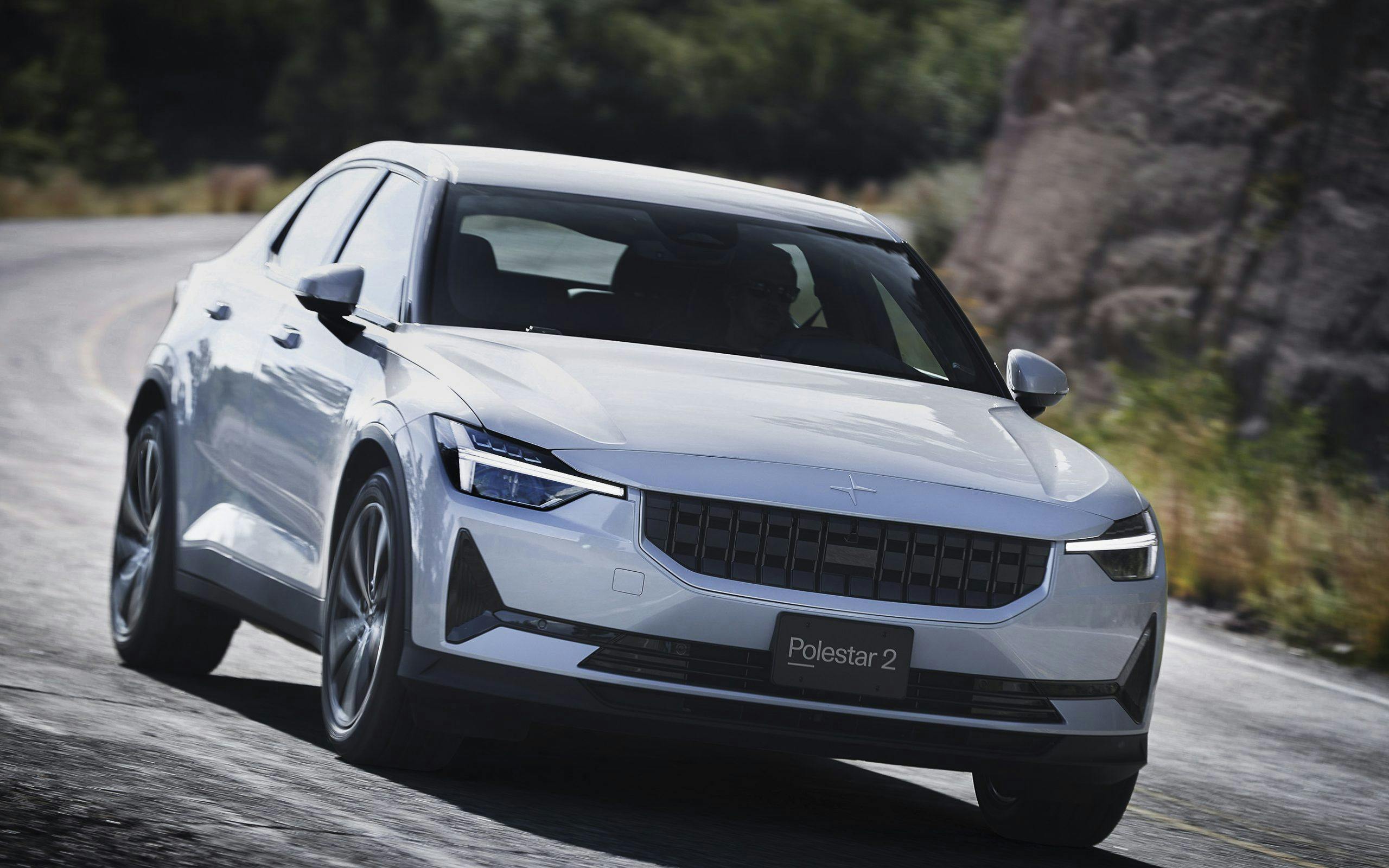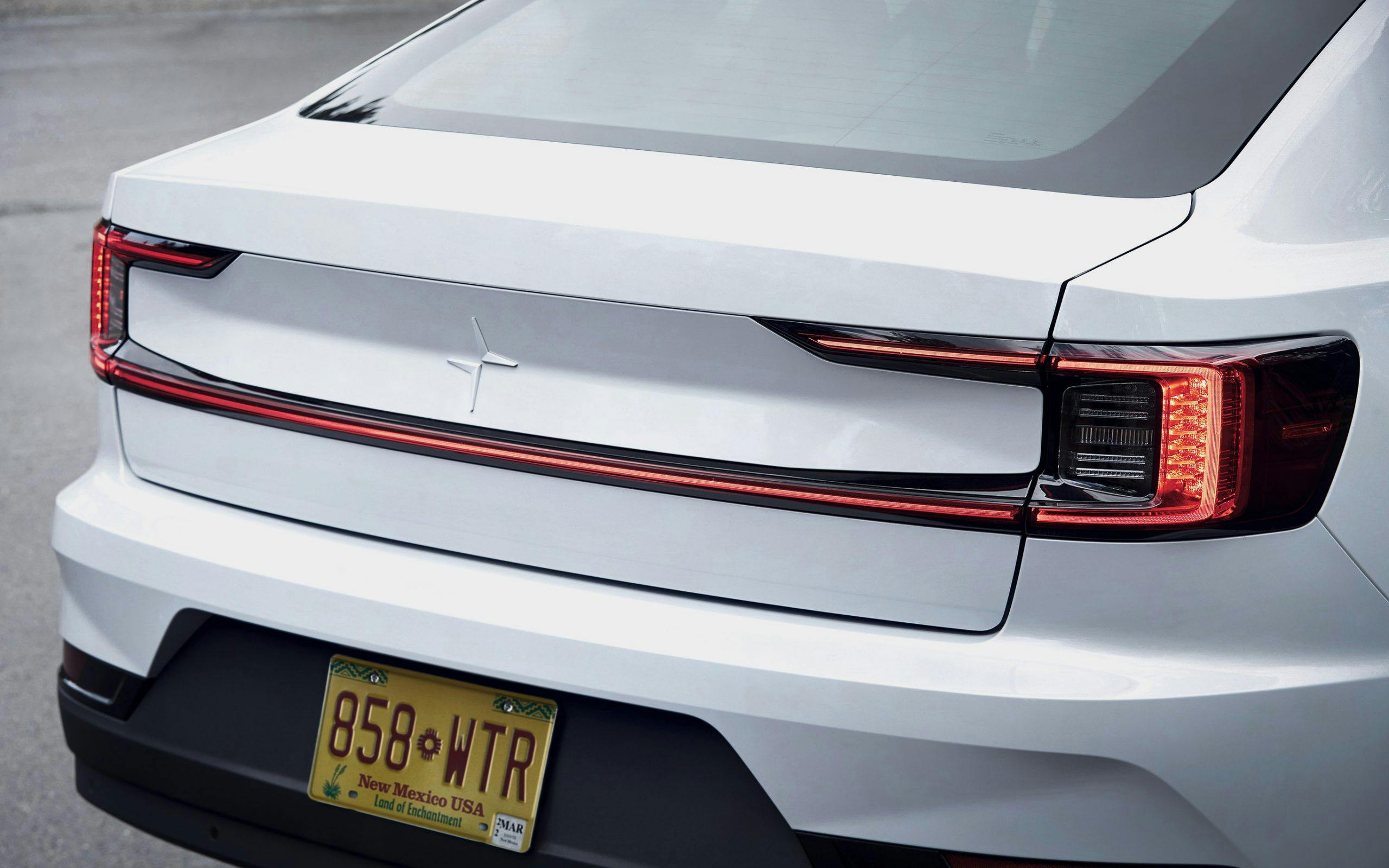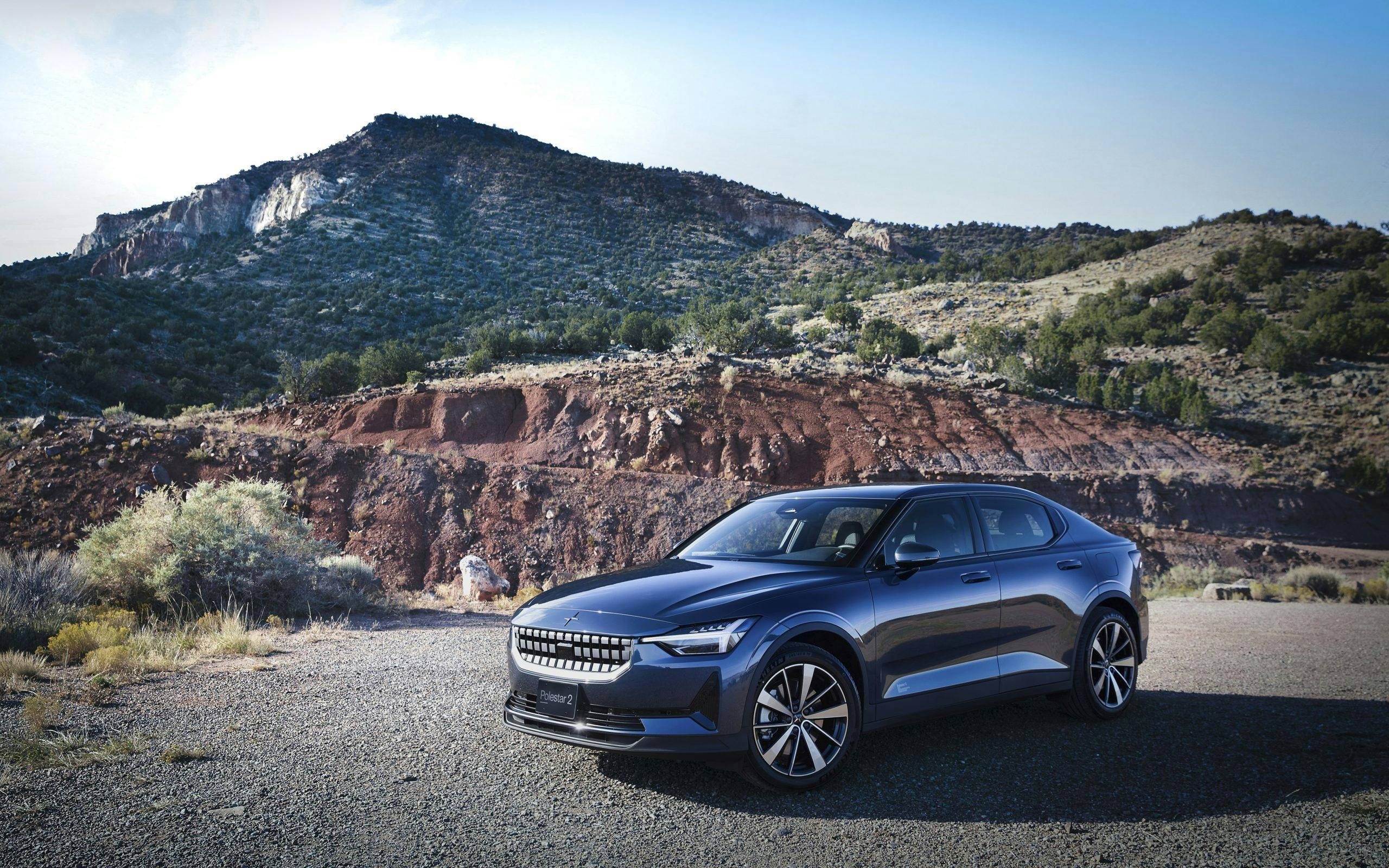Media | Articles
First Look Review: 2022 Polestar 2 Long Range Single Motor
The electric vehicle market is set to explode. It seems that every week there’s news of another upcoming vehicle that’s just on the horizon. The hype for the GMC Hummer EV has been going on for more than a year now, and plenty of EV launches have been delayed by the pandemic and the semiconductor shortage alike. Electric vehicles that can take advantage of this excitement by building a strong reputation in the here and now have a real opportunity to scoop up valuable free agent buyers. Polestar is a new marque, but it’s positioning itself to be a real player. The Volvo sub-brand has been selling cars for more than a year and is now broadening the scope of its first all-electric model, the Polestar 2.

Polestar made the jump from Volvo performance arm to luxury electric purveyor in 2017. The flagship hybrid grand tourer, the Polestar 1, went on sale in 2019 more or less as an attention-grabbing halo, but the Polestar 2 arrived last year. A tall liftback sedan that looks unlike anything else on the road, the Polestar 2 is built on Volvo’s CMA platform that underpins the C40 and XC40 as well as several sedans and crossovers made by Geely, Volvo’s Chinese owner and partner. The CMA platform designed for internal combustion as well as hybrid and electric powertrains, and therefore includes a conventional center tunnel for a driveshaft. In the Polestar 2’s case, that’s where it keeps its 78-kWh battery pack. Topping off at home more or less necessitates a Level 2 charger capable of restoring a fully drained battery in up to eight hours. Using a public fast charger at 150 kW, the Polestar’s “Long range” battery can go from 10 percent to 80 percent capacity in 33 minutes.

We’ve previously tested the inaugural Polestar 2 that came with twin 204-hp motors that each drove an axle for a total of 408 hp. We were quite impressed with that iteration, a Launch Edition with the $5000 Performance Pack costing $66,000 in total. More affordable is the single-motor, front-wheel-drive version, which is new for 2022 and has a base MSRP of $47,200 including destination. A dual-motor version will also be available in a base configuration, allowing buyers to access the full 408 hp version without opting for anything extraneous inside. The 2022 Polestar 2 Long range Dual motor now starts at $51,200, including destination. Combined with tax credits, including the sizable $7500 federal incentive, this expanded lineup brings the Polestar 2 into a much broader customer base than before.
Price is one thing, but even thousands in savings is no cure for range anxiety. Range for the Polestar 2 Dual-motor has been EPA rated at 249 miles but the rating is still pending for the Single-motor, which Polestar expects to be 265 miles. That’s about on par with the standard-range Tesla Model 3’s 263 miles, but well shy of the 353 miles offered in the Model 3 Long Range AWD. Like the Tesla, however, Polestar offers fully online sales—something techy disruptor-types much prefer to dealership haggling.

Also new for the 2022 Polestar 2 is a mechanical heat pump, part of the optional Plus Pack ($4000), which uses waste heat from the drivetrain to heat the cabin. (Typically, electric cars will rely on electric resistance to produce cabin heat, drawing from the battery to keep occupants toasty.) The Polestar’s heat pump can reduce the electric draw by up to 50 percent, resulting in up to 10 percent increased range in 40-60-degree (F) climates.
Marketplace
Buy and sell classics with confidence
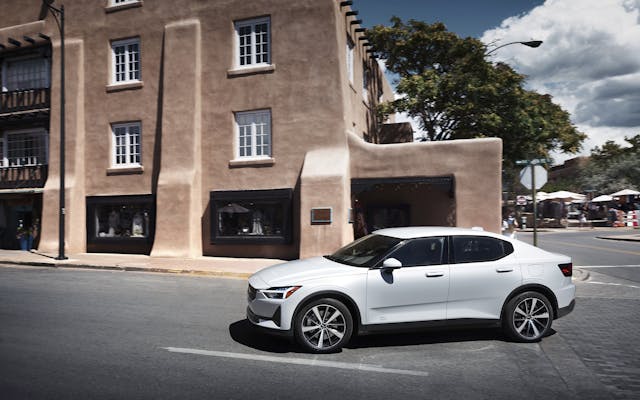
To bridge the gap in performance between the Single and Dual-motor variants, Polestar has equipped its Single-motor version with 231 hp (compared to 204 hp on each axle), while leaving torque for that lone motor at the same at 243 lb-ft. That increase alone might not have made much of a difference, but engineers gave the single-speed transmission a lower gear ratio as well: 10.51:1 in the Single-motor compared to 8.57:1 in the Dual-motor. To put that into terms that are more relatable to traditional cars and pickups, that 22-percent increase in torque multiplication is the equivalent of moving from a 3.73:1 ring and pinion typically found in a sporty daily driver to a 4.56:1 ratio you’d expect to see in a drag racer or towing beast. In short, the added gear ratio makes those 237 electric horses punch way above their weight.
The nature of electric powertrains means that all of the torque can be available the moment you crack the throttle. Even with one motor at the front axle, 0-30 mph acceleration is effortless in the Polestar 2. Unknowing passengers will easily believe this chunky vehicle has 300 hp or more. Acceleration does seem to taper off after that initial rush, with 0-60 coming in seven seconds flat (it’s 4.45 seconds in the Dual-motor), but even typical highway passing is commendable and the average driver will have no complaints with the Single-motor’s thrust. Throttle response was something that we noted as a bit off in our initial review of the Dual-motor Polestar 2, but we had no complaints with the Single-motor. All Polestar models are equipped with the ability to accept updates Over The Air (OTA) and throttle sensitivity, as well as software-related range improvements, are among the changes that could theoretically be rolled out to previously sold models. Perhaps Polestar made some tweaks, or perhaps the lower gear ratio and tuning of the Single-motor sidestepped that issue entirely.
As for braking, we found that the highest setting for Polestar’s one-pedal driving mode—allowing for maximum regeneration—to be a bit aggressive for everything but stop-and-go crawling in the city. The car will assertively but not abruptly slow to a stop, and it takes a bit of focus to maintain smoothness for passengers. The middle option was our go-to for windy roads, but if you’d like to coast in a manner more akin to that of a traditional combustion vehicle, you can select that as well via the central touchscreen.

Driving the Polestar 2 through the New Mexico mountains, at high elevation, was a surprising joy. The regenerative braking allowed us to smoothly scrub speed as soon as we entered a corner, simply by lifting off the throttle. The car’s moderately weighted steering doesn’t offer sports-car levels of feedback, but considering the size and heft, it is a nimble handler. As in most electric cars, the drivetrain made itself known only with a faint hum upon acceleration; wind noise and road noise are properly isolated, which is to say, also nearly nonexistent—a challenge when there’s no combustion engine to overwhelm the senses. Another benefit of an electric powertrain: no performance penalty in high altitudes. At 10,000 feet above Santa Fe, a naturally aspirated gas engine would lose up to 30 percent of its power compared to its output at sea level. Turbo cars don’t suffer quite so much huffing and puffing, but are no such losses with an EV.
Because of regenerative braking and optional one-pedal driving, quite a few miles of range can be put back into the Polestar 2’s theoretical “tank.” Thankfully you don’t have to do any math should the meter start running low; the vehicle’s Google-based infotainment system can calculate range and regen based on elevation and the planned route when you program a destination. We’ve fawned over this Android Automotive OS interface before, and it remains incredibly impressive. Apple CarPlay and Android Auto phone mirroring will be launched via OTA updates, but for now the system runs using Google’s virtual assistant and uses either voice or touch commands to dole out audio entertainment, navigation, and climate control. The 11.15-inch vertically oriented display responds immediately to touch, and menus are intuitive to peruse. When stopped, it took seconds to pair our iPhone. There aren’t a lot of physical buttons on the dash or console, but large icons serve as buttons both above and below the screen. Don’t fear, there’s still a physical volume knob.
Will its timely launch, ahead of such upcoming models as the Cadillac Lyriq, be enough to allow the Polestar 2 to get its foot into the door of the growing luxury electric market? We think it has all the right technical ingredients, but as we’ve stated before, the Polestar brand is still growing. A big advertising push is in the works for the last quarter of 2021, so don’t be surprised if you hear a lot more about this stylish EV maker in the coming months. Expect the single-motor Polestar 2 in Polestar “Spaces” (read: showrooms) starting January 2022.
2022 Polestar 2 Long Range Single Motor
Price: $47,200
Highs: Clean design that is uncluttered both inside and out. Amazing Google-based infotainment.
Lows: Mediocre rear visibility, strangely-shaped cupholders (if we’re getting picky). Range below 300 miles won’t keep it competitive for long.
Summary: A buttoned-up, fully thought-out newcomer for those that want novelty that doesn’t wear a Tesla badge. A solid value proposition as long as tax credits last.
